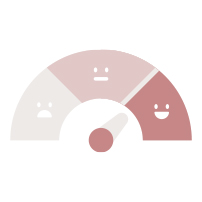How much is your brand worth? It’s a question you’ve probably gotten plenty of times, both from others and yourself. There are plenty of reasons you might want to know how profitable your brand is—the most obvious being that, as an entrepreneur, you want to be sure the brand you’ve poured your heart, soul, and resources into is making you money at the end of the day.
But while some aspects of business are easy to quantify—your sales, your expenses, your growth—the profitability of your overall branding is harder to pinpoint. That doesn’t mean it can’t be done—you’ll just need to get a little creative. In this blog post, we’ll discuss why measuring the value of a brand poses such an interesting challenge to business owners. Then, we’ll take a look at four different methods for translating the power of your brand into cohesive data you can use to strategize for your business’s future.

Breaking Down the Data
If you’ve ever taken a course in statistics, research methods, or another related field, you’ll know there are two main categories of data: quantitative and qualitative. Quantitative data consists of either pure numbers (such as measurements, prices, and fractions), or data that can be easily translated into numbers (such as demographics like sex and gender). Because it’s so black-and-white, quantitative data is relatively easy to obtain, analyze, and draw conclusions from.
Qualitative data, on the other hand, is descriptive. It tracks observations that can’t be easily translated into numbers, such as language, behavior, and emotions. Qualitative data is inherently subjective and is often based on interviews, documents, and case studies, which makes it more challenging to interpret.
To get a better feel for the distinction between quantitative and qualitative data, think about the last time you filled out a survey. There were probably a few different types of questions included. You may have selected an answer on a multiple choice question, or rated something on a scale of 1-10. These types of questions collect quantitative data—responses can be neatly tallied or transferred to a graph. But there may have been a few free response questions that allowed you to type several sentences, or even a few paragraphs. These questions collect qualitative data—information about different people’s subjective experiences.
Measuring the profitability of your brand is difficult because, unlike many aspects of your business, it relies on qualitative, rather than quantitative, data. Specifically, your brand’s overall value depends on how your audience perceives and feels about your brand. And, unsurprisingly, perceptions and feelings are harder to track and quantify than exact measurements.
4 Methods for Measuring Your Brand’s Worth
Measuring the profitability of your brand is challenging, but it’s not impossible—and it’s important for your business’s success. Even if you can’t produce exact numbers, there are plenty of strategies you can use to gauge how effective your branding is, and what, if anything, you need to change. Below are four of our favorite methods for measuring your brand’s worth.

Brand awareness survey
It sounds basic, but brand awareness carries a powerful ROI. And when we talk about brand awareness, we’re not just talking about brand recognition.
Brand recognition is a measure of the public’s ability to identify a brand based on the visual aspects of its identity—for instance, its logo, mascot, or tagline. It’s important in its own right—one study shows that 69% of people prefer to pay extra money for a product from a brand they recognize than to purchase a cheaper alternative). But brand awareness is much more powerful.
Brand awareness is a measure of the public’s ability to recall:
- Your brand’s name
- The type of product or service your brand provides
- What sets your brand apart from your competitors (also known as your brand positioning)
- News, media, and marketing surrounding your brand
- Emotions, connotations, and other general impressions associated with your brand
At first glance, this data might seem hopelessly qualitative. But there are several concrete metrics for measuring brand awareness, with one of the most effective being a brand awareness survey. It’s a tool that gives you clear data about how your target audience thinks about your brand in the larger context of your industry.
For instance, you might ask the respondent to type what brand first comes to mind when they think about the service or product you offer. If a majority of respondents type your brand, you’ll know your brand awareness is healthy. If they mostly type your competitors’ name, it means you have some work to do to make your brand more visible—which will ultimately increase your brand’s profitability.

Brand lift
Imagine you’re scrolling through your social media feed, and you come across an advertisement for a special price on a hotel stay. You might click the ad to find out more if you were in the mood for a trip, but otherwise you’d probably leave it untouched.
Now imagine you see the same advertisement for a special price on a stay at the Four Seasons Hotel in Paris. Even if you had no previous desire to travel to France, chances are that ad would get your attention—after all, the Four Seasons is one of the most famous hotel brands in the world, whose name is synonymous with luxury, prestige, and fame. We’d be willing to bet you would be much more likely to click on an advertisement for the Four Seasons than for an unnamed hotel.
What we’ve just described is called brand lift, and it’s another important metric for your brand’s profitability. Brand lift is a measure of how much your brand name alone impacts your audience’s decision to engage with your business. And measuring brand lift is as simple as the scenario we presented above. Using Google Ads or a similar service, you can set up an A/B test with two versions of the same advertisement: one with your brand name, and one without.
For instance, we might enter:
Version 1: Book your free web design consultation today!
Version 2: Book your free web design consultation with Miss Details today!
If Version 2 has significantly higher click-through rates than Version 1, you can feel confident that your brand name alone carries distinct value for your audience—and there’s a good chance that value will make its way into your overall profits.

Social media metrics
If the past two decades have taught us anything, it’s that social media is here to stay—and it’s increasingly crucial to your brand’s success. Moreover, social media metrics are simple, quantifiable indicators of how well your brand is performing.
The number of followers you have on your various social media platforms, for instance, isn’t just a vanity project—it’s a very real measure of how many people your brand message is reaching. The more followers you have, the more people see your product or service, and the more likely they’ll be to remember you when it comes time to purchase that product or service. Reaching a certain number of followers on different platforms can give your brand immediate practical benefits as well—for instance, surpassing 10,000 followers on Instagram gives you access to the highly coveted “swipe up” feature, which opens the door to new possibilities around promotions and affiliates.
Your number of followers isn’t the only social media metric that impacts your brand’s profitability, however. The amount of likes, comments, shares, saves, and mentions your brand’s social account receives all contribute to the visibility and overall success of your brand. Keep in mind that certain actions carry more weight on some platforms than others. Saves have eclipsed likes on Instagram, for instance—the more people save a post from your brand, the higher Instagram will position it on their Explore page.
If your numbers of followers, likes, and shares are lower than you’d like, check out all of Miss Details’ offerings around social media optimization. We can help you strategize your content to increase your metrics and make your brand visible.
A note about followers: It’s not uncommon for businesses to pay for followers on social media. Although this route will boost your metrics and allow you access to some of the perks that come with those higher numbers, it has a serious downside. When a percentage of your audience, no matter how small, is bought, it becomes impossible to tell if any engagement with that audience (see below) is real or artificial. Although it may solve some problems initially, buying followers is a short-sighted solution that ultimately makes it much more difficult to measure your brand’s true profitability.

Audience engagement
When it comes to determining if your brand is profitable, there’s one piece that stands out among the rest: building meaningful relationships with your audience. If you go the extra mile to make your clients feel valued, they in turn will see your brand as valuable, in part by forming an emotional connection with your brand. To accomplish this, you’ll need to encourage your audience to actively engage with your brand.
One way to do this is through the social media metrics we mentioned above: comments, likes, shares, mentions, and more. But there are plenty of ways clients can interact with your brand that have nothing to do with social media. A few examples are:
- Giving you an email address to add to your contact list
- Filling out an inquiry form about your services
- Downloading a lead magnet or other opt-in
- Writing a positive review for your business
- Attending events your brand runs or appears at
- Referring new clients to your business
All of these examples can, and should, be converted into data and analyzed often. It’s a good idea to conduct a regular inventory of how many people are on your email list, how many referral clients you’ve received, how many four- or five-star reviews your business has on platforms like Google and Yelp, and more. These engagement metrics are vital statistics for your brand’s profitability, visibility, and sustainability.
Going Beyond the Numbers
Whether the data behind them is quantitative or qualitative, performance metrics are critical to any business’s success, and we hope the ideas in this article have inspired you to get creative with how you measure your brand’s profitability. All the strategies we’ve discussed can help you gain a better understanding of your level of client engagement, brand awareness, conversion rates, and more—and usually, higher levels translate into higher profits.
But keep in mind that while numbers might be the heartbeat of your brand, they’re not the heart itself. The real magic of branding happens in the qualitative data. The way your clients feel when working with you, the associations they hold with your name, the impact your services have on their lives… These are the things that will keep your audience coming back for more.
If you’re looking to learn even more about the magic of branding, make sure to subscribe to our monthly Brand Builders Newsletter below.
Don’t want to miss out on our articles and insights?
Sign up for the Miss Details newsletter today.



